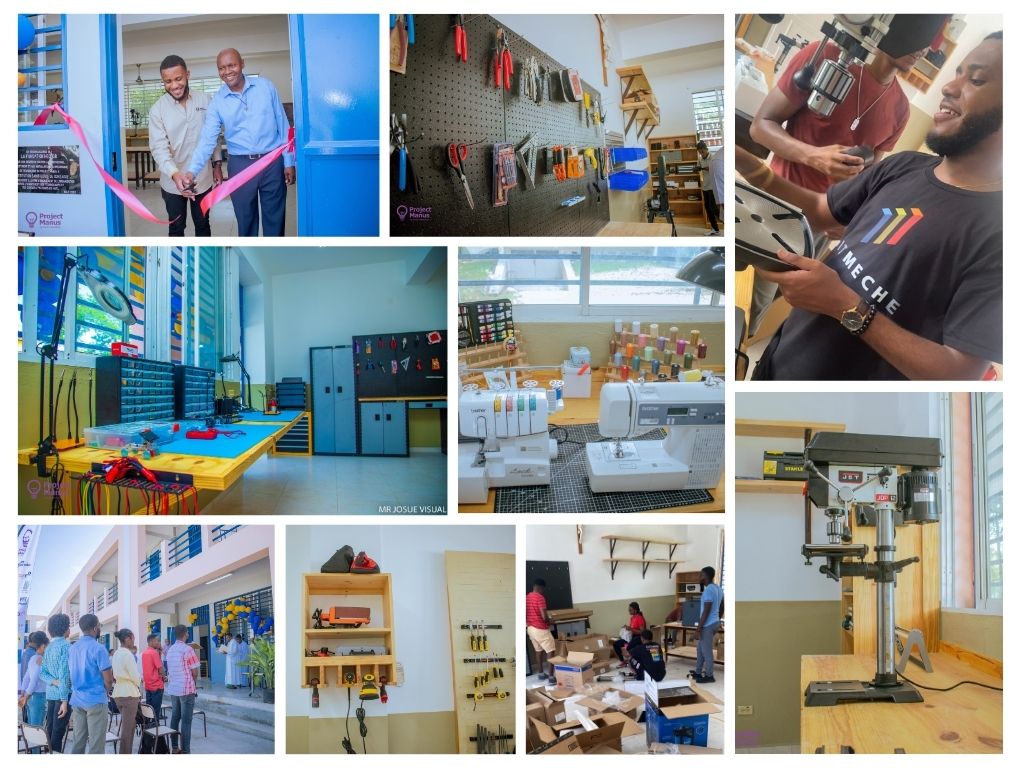Inspired by hands-on learning, MechE junior creates Haiti’s first of its kind open-use Makerspace
Inspired by MIT’s hands-on approach to learning, Junior MechE student Wilhem Hector spent the summer working on an exciting project in his home country of Haiti, where he built what he has characterized as the country’s first-of-its-kind open-use makerspace.
“I got inspired while taking 2.00A, my very first hands-on class, in Spring 2022,” Hector says. In taking the class, he realized he needed to learn everything from scratch, “from turning on the 3D printers to maneuvering large tools.” The experience motivated him to work on a project to foster hands-on education for aspiring young engineers back home.
A makerspace, like the name suggests, is a collaborative workspace where tools or resources are provided as a way to invite and foster hands-on creativity and learning. Hector named his makerspace “Project Manus,” after MIT’s motto: Mens et Manus, Latin for mind and hand.
“For the past 17 months, I have worked on designing the space, gathering funding, and securing crucial partnerships to make the project happen,” he says. “We hope that Project Manus will establish the grounds of hands-on education in Haitian high schools and offer attractive alternatives to gang violence to the youth.”
Hector’s Project Manus shares its moniker with an on-campus project, but is not directly affiliated. MIT’s Project Manus champions making on MIT's campus and provides trainings to MIT community members in two makerspaces, The Deep (37-072) and Metropolis (6C-006B). MIT’s campus makersystem includes makerspaces tailored for entrepreneurship, the arts, class projects, metal working, wood working, glass working, micro/nano making, biomaking, unrestricted use and more. Hector says he took a lot of inspiration from campus Project Director Professor Kim Vandiver, the Edgerton Center, and MIT’s hands on approach in general.
Hector spent a little over a year raising nearly $30,000, in cash and in kind, in collaboration with various labs and centers at MIT to design the project to best meet the needs of the targeted students. Collaborating groups include the Pappalardo Lab, Design Lab (N52), the Edgerton Center, the Physics Department, the PKG Center, the Office of Minority Education, and the New Vassar residence hall makerspace.
“I am beyond grateful to MIT for having inspired and supported me through that 17-month long journey,” he says.
The initial goal of the project, Hector says, was to democratize access to innovation tools to bolster creativity and so that Haitian kids could learn basic engineering skills before going to college.
“We are working with the Edgerton Center to adapt some of their scientific training modules to our needs,” he says. “Our goal is to train about 1500 students a year on how to maneuver the tools, and potentially build small engineering projects.”
He worked on purchasing equipment through the beginning of the summer, he then traveled to Haiti to install and build the space. Hector’s Project Manus was officially inaugurated in Haiti on August 19.



